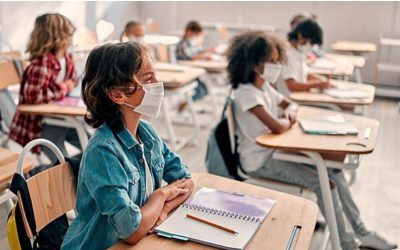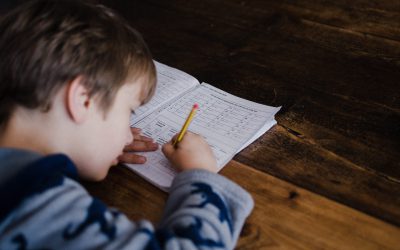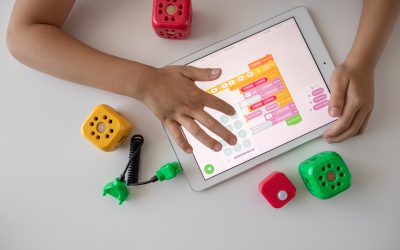No final testing in primary schools this year: Will this provide us with long-term insights?
10 Apr 2020 | Policy-makers, Professionals, School boards, School leaders
The much-discussed final test in primary education has been cancelled this year. Since 1968, these test results have served as an objective criterion for the intake of students in secondary education at the most appropriate level. On the other hand, over the past 20 years, the test has resulted in an explosive growth in shadow education in the form of test training. So this year, we are witnessing a scenario that many had already predicted and that others had feared. Can we make a sound assessment of the consequences?
In this blog, we discuss the consequences for the three different functions of the test: providing advice to the secondary school, assessing the quality of education, and offering a continuous learning pathway.
m.c.m.ehren@vu.nl; j.m.conijn@vu.nl
27-03-2020


We then discuss a number of possible long-term positive consequences.
The final test in primary schools is held annually between 15 April and 15 May. The Minister of Education, however, stated in a letter to the House of Representatives dated 18 March that the tests would not be held this year due to the closure of the schools. His argument was that teachers were busy enough with providing and developing distance learning. And what’s more, the final test would no longer provide reliable information for suitable school advice, as pupils are expected to fall behind (unevenly) due to the closure of schools.
What are the consequences of the test being cancelled? And can we learn anything from this for the long term?
Below we discuss the possible consequences based on the various functions of the final test.
Providing advice to secondary schools: a lower level advised for about 7% of pupils
Since school year 2014/2015, the school advice of the teaching team has been considered authoritative for the level at which pupils enter secondary education. This year, the primary school’s advice was issued before 1 March. The results of the final test in primary education count as a ‘second opinion’. It is an independent and objective fact which should increase the predictive value of the final advice (and this is borne out in the research, see the study by Utrecht University). The primary function of the test is to allow pupils who may have a higher ability than the teacher predicts to demonstrate this. Pupils whose advised secondary school level on the basis of the final test is higher than that advised by the school are entitled to ask the teacher to reconsider the advice.
This year, the preliminary school advice issued for all pupils is at the same time their final school advice ( letter to the House of Representatives, 18 March). We expect that this will only have consequences for a relatively small group of pupils. This is because various studies show that the school’s advice is only adjusted upwards based on a higher final test score for only about 7% of pupils.
But what are the long-term effects for this 7% of pupils?
The ultimate ‘impact’ felt by this subgroup of pupils depends on the extent to which pupils whose advice has been adjusted upwards are actually placed at the right higher level of secondary education. A longitudinal study by Utrecht University provides some insight into these results. Most pupils whose advice was adjusted upwards end the third year of secondary school at the lower level of the initial school advice. However, the upward adjustment of the advice turned out to be justified for a substantial proportion of the pupils; they were able to keep up with the higher level. An example: of the pupils who received ‘HAVO’ advice from the teacher, but the higher ‘VWO’ based on the final test, 36.9% were still following VWO three years later.
From this research, we could conclude that some pupils will not be given the opportunities they deserve next school year. An important caveat, however, is that results from this study – where the school advice was issued in 2015 – cannot be generalised to the current situation, because in recent years we have seen a number of trends that may further reduce the impact caused by the loss of the final test for this group of 7%:
• In recent years, for example, the number of school recommendations for a multiple school type (e.g. HAVO/VWO) has increased, giving pupils increased opportunity to ultimately find the level that suits them best.
• In previous years, some of the pupils also had their advice adjusted upwards because they experienced substantial growth in the final months of the last year of primary school. This potential for growth would seem to be smaller in the current situation where schools are closed (especially if the closure continues after 6 April), and pupils are more likely to be at a lower final level than expected based on the school advice of 1 March.
• In addition, the Minister of Education has announced that he will enter into discussions with secondary schools about how they can ensure that pupils are in the right place when the schools open again. This offers opportunities for a more flexible proposition that may create new opportunities for this group of pupils. We’ll add some ideas on this below.
What are the consequences for the role of parents in the school advice?
The school advice is an important moment for parents and pupils. Parents often put pressure on schools to adjust the advice upwards. Research by DUO for the school year 2018/2019 showed that 6% of parents complained that the advice given by the school – in their opinion – was too low. Some dissatisfied parents even had an IQ test taken to bolster their argument, gave presents to the teacher, or went to speak with the secondary school off their own back. Statistics Netherlands (CBS) calculated that annual household expenditure on additional educational activities, such as test training, has risen to around 200 million euros over the past twenty years.
What will be the lasting impact of the ‘parent effect’ on the school advice this year?
On the one hand, parents now seem to have little more choice than to follow the preliminary advice: all tutoring institutions are closed, there is little point in training for a final test that has been cancelled, and parents no longer have a final test score which they can use to ‘lobby’ a secondary school. This could have a positive impact for pupils. Research by DUO shows that more than half of secondary school teachers think that there has been an increase in the number of pupils who have been placed too high in the first year of secondary school. If we assume that some of these pupils got there thanks to test training and upward pressure from parents, these will now find a more suitable place in secondary education.
On the other hand, there is also a chance that these parents, more so than in other years, will look for some other independent, objectively measurable fact apart from the outcome of the final test, such as the result of an IQ test. The question, therefore, is whether a comparable mechanism might not emerge, but with a form of testing where there is less available evidence of its relationship with success in secondary education.
Assessment of educational quality: insufficient insight into learning performance
A second function of the final test results is to assess the quality of primary education in the Netherlands. Last school year, this evaluation was not possible due to problems with the standardisation of several final tests and with registration of the level of attainment of the achievement levels. Following the decision by the Minister of Education, this function of the final test of primary education is once again rendered unavailable.
Is it wise that this function of the final test is cancelled too?
On the contrary, it would seem highly desirable this year to be able to assess the impact that the closure of schools has had on the level of knowledge and skills of pupils:
– to obtain a good picture of performance and possible differences between pupils
– to find where there are delays that need fixing and to work out how to fix them.
It is expected that the current closure of schools will increase the inequality of opportunity in education, because parents with differing socio-economic backgrounds have different ways of helping their children. It is essential to assess the extent to which differences between pupils may have increased due to the temporary imposition of distance learning. Ideally, a standardised test would be used for this type of comparative study, such as the final test for the last year of primary school, and school tracking tests for the other primary school years. The outcome of the final test would then no longer be used to classify individual pupils or to assess primary schools, but to provide informative feedback on the slack that Dutch secondary schools will have to pick up in the coming school year, and how we can best support this. This would also allow us to facilitate the third function of the final test:
Offering a continuous learning pathway from primary to secondary education: administer the final test at the start of secondary school
A third function of the final test in primary education is to inform secondary schools about where specific pupils stand in relation to the achievement levels for arithmetic and language. This facilitates the provision of continuous learning pathways. Especially if schools remain closed for a longer period of time and differences between pupils have widened, maintaining continuous learning pathways could become a challenge in secondary schools.
Administer the final test at the start of secondary school
Here, too, administering an extensive, standardised test, such as the final test, could prove very useful. Again, not to assess or classify individuals, but to gain insight into what individual pupils need at the start of the new school year. In that case, the final test could be used formatively (rather than summatively) at the start of the intake year in order to optimise the learning process of pupils. All ‘evidence based’ forms of effective formative feedback could be thrown into the mix in order to optimise the further learning process of pupils. Think, for example, of gaining insight into where individual pupils stand in relation to basic skills, giving pupils insight into educational goals, or analysing wrong answers in order to identify the wrong strategies of individual pupils.
For the longer term?
Flexible transition from primary to secondary education
The results of the ongoing discussion between the Minister of Education and secondary schools about flexible treatment of the intake level may provide an important impulse for interesting solutions for the longer term.
It is known that early selection of pupils has adverse effects on equality of opportunity. What’s more, the differences in the pedagogical climate between primary and secondary education also lead to a relatively high downward mobility of pupils. In view of these problems, it may then be a good thing that the current situation makes it necessary to consider more flexible transitions from primary to secondary education.
Possible solutions:
– More differentiated provision in the first year of secondary school
– Additional methods to monitor pupils properly
– Additional provision to ensure that underprivileged pupils, together with their parents at home, are able to keep up at school.
Recent research by the Inspectorate of Education confirms these options. This research shows that schools that keep a good track of pupil development and respond to it have relatively high upward mobility and little downward mobility. The type of intake class (homogeneous, combined or heterogeneous) did not seem to be relevant to success in this study – in contrast to the often-cited benefit of mixed intake classes. Schools with homogeneous intake classes that offered pupils many opportunities for extra challenging work or support also achieved a good degree of upward mobility. While preparing for next school year, secondary schools should therefore now focus on developing this kind of tailor-made provision.
Finally: the formative use of the final test in primary education
One of the central functions of the final test in primary schools over recent decades has always been the individual classification of pupils. Given that, this year, this summative function will no longer be available, it may be possible to further develop various formative functions of the final test for the continuous learning pathway of individual students. This could have several advantages, for example, on student motivation, ownership, and optimisation of the learning process. For pupils in the last year of primary school, the final test is an important and time-consuming moment that they work toward for a long time, while in the end it provides merely a snapshot and a single metric in time. With a formative function, by contrast, attention could also be focused on the test as a source of information for the proper organisation of the teaching and learning processes.
________________________
1) https://www.cbs.nl/nl-nl/maatwerk/2019/09/uitgaven-van-huishoudens-aan-huiswerkbegeleiding
See also information for:
Most recent blogs:
How LEARN! supports primary and secondary schools in mapping social-emotional functioning and well-being for the school scan of the National Education Program
Jun 28, 2021
Extra support, catch-up programmes, learning delays, these have now become common terms in...
Conference ‘Increasing educational opportunities in the wake of Covid-19’
Jun 21, 2021
Covid-19 has an enormous impact on education. This has led to an increased interest in how recent...
Educational opportunities in the wake of COVID-19: webinars now available on Youtube
Jun 17, 2021
On the 9th of June LEARN! and Educationlab organized an online conference about...
Homeschooling during the COVID-19 pandemic: Parental experiences, risk and resilience
Apr 1, 2021
Lockdown measures and school closures due to the COVID-19 pandemic meant that families with...
Catch-up and support programmes in primary and secondary education
Mar 1, 2021
The Ministry of Education, Culture and Science (OCW) provides funding in three application rounds...
Home education with adaptive practice software: gains instead of losses?
Jan 26, 2021
As schools all over Europe remain shuttered for the second time this winter because of the Covid...





